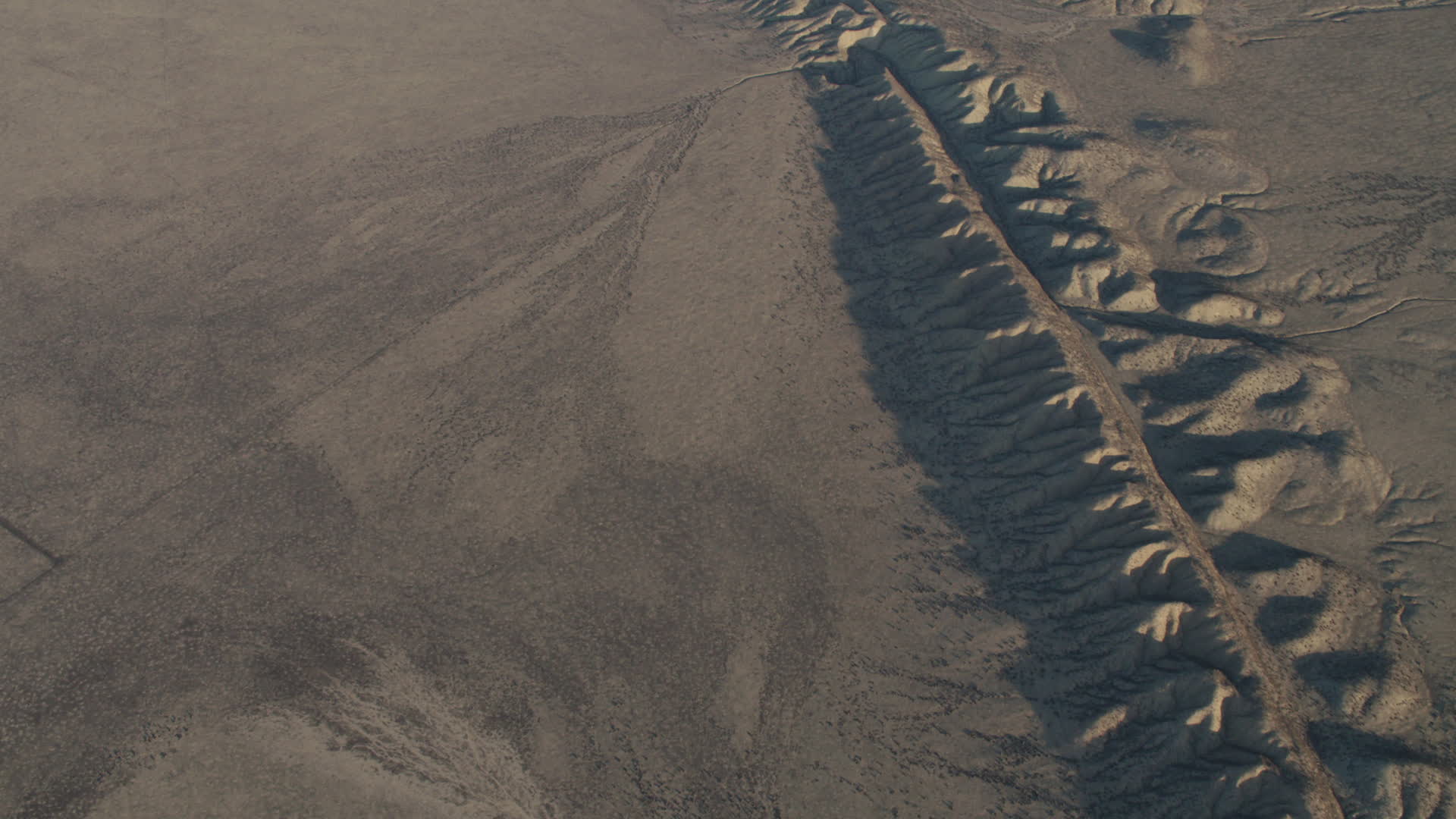Where Geology Meets Wine Country
Get ready for an incredible journey through time and the immense power of nature in San Luis Obispo County! Here, the San Andreas Fault, one of the most famous geological features on Earth, has left its mark on the landscape in truly awe-inspiring ways. We’ll explore the Carrizo Plain National Monument, where the fault line is etched across the land like a giant scar. At Wallace Creek, we’ll witness firsthand the ongoing movement of the fault, and discover how the Coastal Branch of the State Water Project was engineered to withstand its immense power. Join us as we uncover the profound impact the San Andreas Fault has had on this region, shaping its land, its resources, and the lives of the people who call it home.
San Luis Obispo: Living Alongside a Giant
Imagine a place where the very ground beneath your feet is constantly shifting. That’s San Luis Obispo County, a region sculpted by the mighty San Andreas Fault. This isn’t just a crack in the earth; it’s a colossal fracture line that slices through the county, a constant reminder of the immense forces at play beneath the surface.
One of the most captivating places to witness the fault’s activity is Wallace Creek. Here, the streambed has been gradually offset over time, a testament to the fault’s relentless creep. It’s a striking visual representation of the powerful forces shaping our planet.
For a truly panoramic perspective, head to the Carrizo Plain National Monument. This vast grassland is dramatically divided by the fault, creating a prominent ridge known as the “Dragon’s Back.” It’s a sight you won’t soon forget.
But the San Andreas Fault isn’t just a geological spectacle. Scientists from around the globe flock here to study its every move. They’re like detectives, piecing together clues about earthquake behavior and the possibility of predicting these seismic events. Their research here could one day hold the key to saving lives.
What’s even more fascinating is that the fault’s influence extends beyond earthquakes. It actually plays a crucial role in the region’s renowned wine production. The unique composition of the soil where the grapes are grown is a direct result of the fault’s activity over millions of years. This churning and mixing of the earth have created a terroir that imparts distinctive flavors to the local wines, transforming a geological phenomenon into an agricultural asset.
Living with the San Andreas Fault requires a unique blend of respect and preparedness. While earthquakes are a fact of life here, residents have adapted to the region’s seismic nature, taking steps to mitigate risks and build a resilient community.
When you visit San Luis Obispo County, take a moment to appreciate the power of the San Andreas Fault. It’s a humbling reminder of our planet’s dynamism and the delicate balance between beauty and force in the natural world.
Is San Luis Obispo on a Fault Line?
The answer is a resounding yes! San Luis Obispo County isn’t merely near a fault line; it’s practically intertwined with the infamous San Andreas Fault. This geological behemoth, infamous for its role in the devastating 1906 San Francisco earthquake, cuts right through the heart of the county. What’s more, a network of lesser-known, smaller faults crisscross the area, adding further complexity to the region’s seismic landscape.
A Drive Through Earthquake Country
Just an hour’s drive from San Luis Obispo lies the Carrizo Plain, a must-see for anyone fascinated by geology and the raw power of nature. Here, the San Andreas Fault isn’t hidden beneath the surface; it’s on full display. You can witness firsthand the visible scars left behind by its relentless movement, including dramatic ridges sculpted by immense pressure. It’s like the Earth is putting its history on exhibit.
The Carrizo Plain serves as a giant, open-air laboratory for scientists studying fault behavior and earthquake prediction. The insights gained here could have far-reaching implications for earthquake preparedness and mitigation strategies.
The Silent Threat Down South
While San Francisco often dominates the conversation about earthquake risk in California, the southern portion of the San Andreas Fault, particularly the segment near San Luis Obispo, is causing growing concern among experts. This section has been eerily quiet for over three centuries – a silence that has many geologists worried. They believe that this prolonged period of inactivity suggests a buildup of energy that could result in a significantly more powerful earthquake than the one that shook San Francisco in 1906.
Location is just the Beginning
Simply knowing that San Luis Obispo sits on a fault line doesn’t tell the whole story. Just as understanding the path of a storm doesn’t fully convey its potential intensity or impact, understanding earthquake risk requires a deeper dive.
Several factors contribute to the overall risk, including:
- Fault Activity Levels: How often a fault moves and the energy it releases varies.
- Age of the Fault: Younger faults may pose different risks compared to older, more established ones.
- Building Codes: Structures built to withstand earthquakes can mean the difference between minor damage and catastrophic collapse.
- Community Preparedness: Having emergency plans, supplies, and a general awareness of what to do during an earthquake are crucial for safety.
So, yes, San Luis Obispo is situated on a fault line, but that’s only one piece of the puzzle. Scientists are constantly working to unravel the complexities of the San Andreas Fault and its intricate web of interconnected faults to better understand and prepare for the inevitable tremors that will shape the region’s future.
What Cities Would Be Affected by the San Andreas Fault?
Envision a colossal crack in the Earth’s crust, extending over 800 miles along the California coastline. That’s the San Andreas Fault – a powerful testament to the dynamic forces shaping our planet. This fault has the potential to unleash massive earthquakes that could impact millions of people. While predicting precisely when the ground will shake remains a challenge, we can confidently say that cities and towns situated near the fault are most vulnerable.
Large metropolitan areas like San Francisco, Los Angeles, and San Diego come to mind immediately. These densely populated urban centers lie in close proximity to the fault line. However, it’s not just major cities at risk. Smaller communities like Santa Barbara, known for its picturesque coastline, Oxnard with its agricultural heritage, and Big Bear Lake, a popular mountain resort town, are all located near the San Andreas Fault and could experience significant shaking during a major earthquake.
It’s important to remember that the San Andreas Fault isn’t a single fracture but rather a complex network of fault zones. This intricate system means that a much broader and more diverse range of California communities could be affected by its activity.
The San Andreas Fault serves as a constant reminder that California is earthquake country. While scientists strive to improve earthquake prediction methods and enhance our understanding of fault behavior, the reality is that preparedness is key. Understanding the risks and taking appropriate safety measures are essential for individuals and communities residing in this seismically active region.
Does the San Andreas Fault Run Through Bakersfield?
The answer to this question is a bit more nuanced. While the San Andreas Fault doesn’t cut directly through Bakersfield, the proximity of this major fault line means that the city is far from immune to its effects.
Think of the San Andreas Fault as a massive dividing line between two gigantic puzzle pieces of the Earth’s crust, known as tectonic plates. These plates are in constant motion, grinding past each other. This movement builds up tremendous stress, and when that stress finally releases, we experience earthquakes.
Bakersfield might not sit directly atop the San Andreas Fault, but it’s close enough to feel the impact of any major seismic activity. It’s kind of like standing next to a bass drum – you don’t have to be holding the instrument to feel the vibrations. Geologists refer to the area around the fault that is still vulnerable to shaking as the “shake zone,” and Bakersfield falls squarely within this zone.
A short distance from Bakersfield lies the Carrizo Plain National Monument, a powerful reminder of the San Andreas Fault’s impact on the landscape. This unique area showcases the immense power of the fault with its striking geological formations, including visible scarps and ridges.
Living near a major fault line like the San Andreas means that residents of Bakersfield need to be prepared. It’s all about understanding the risks and taking proactive steps to stay safe, just as one would in an area prone to hurricanes or tornadoes. Preparedness and awareness are vital parts of life in such a geologically dynamic region.
Get ready to satisfy your cravings at the renowned running bear pancake house in west yellowstone, a local favorite with a delectable menu. Immerse yourself in the volcanic landscapes of Santorini and discover the exquisite flavors of Santo wines, crafted from grapes grown on the island’s unique volcanic soil.










2 thoughts on “Experiencing the San Andreas Fault in San Luis Obispo County: A Journey Through Geology and Landscape”
Comments are closed.